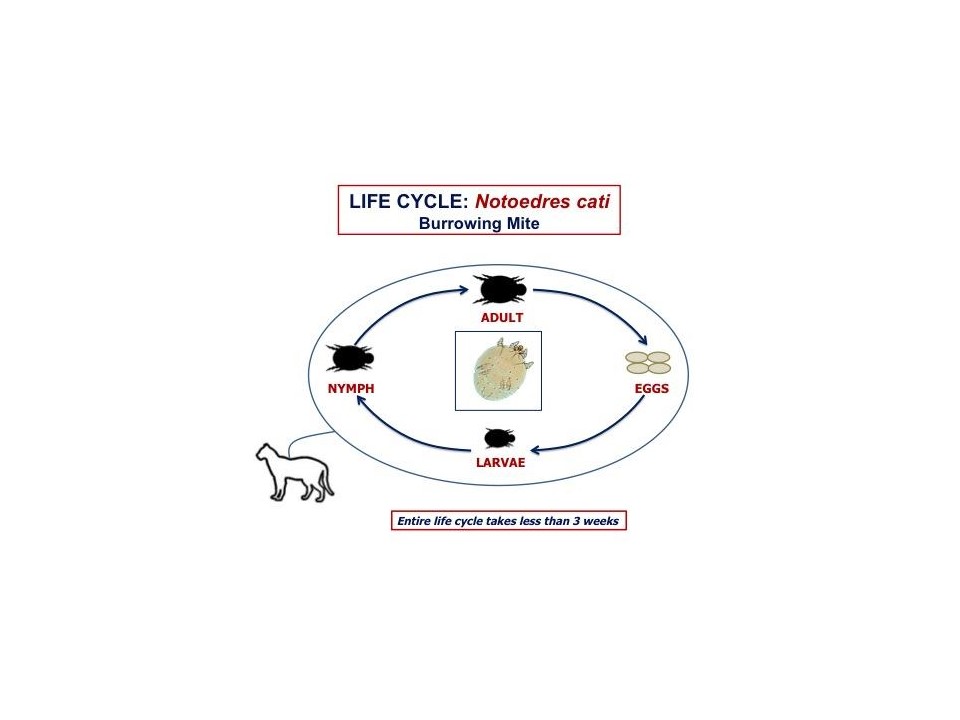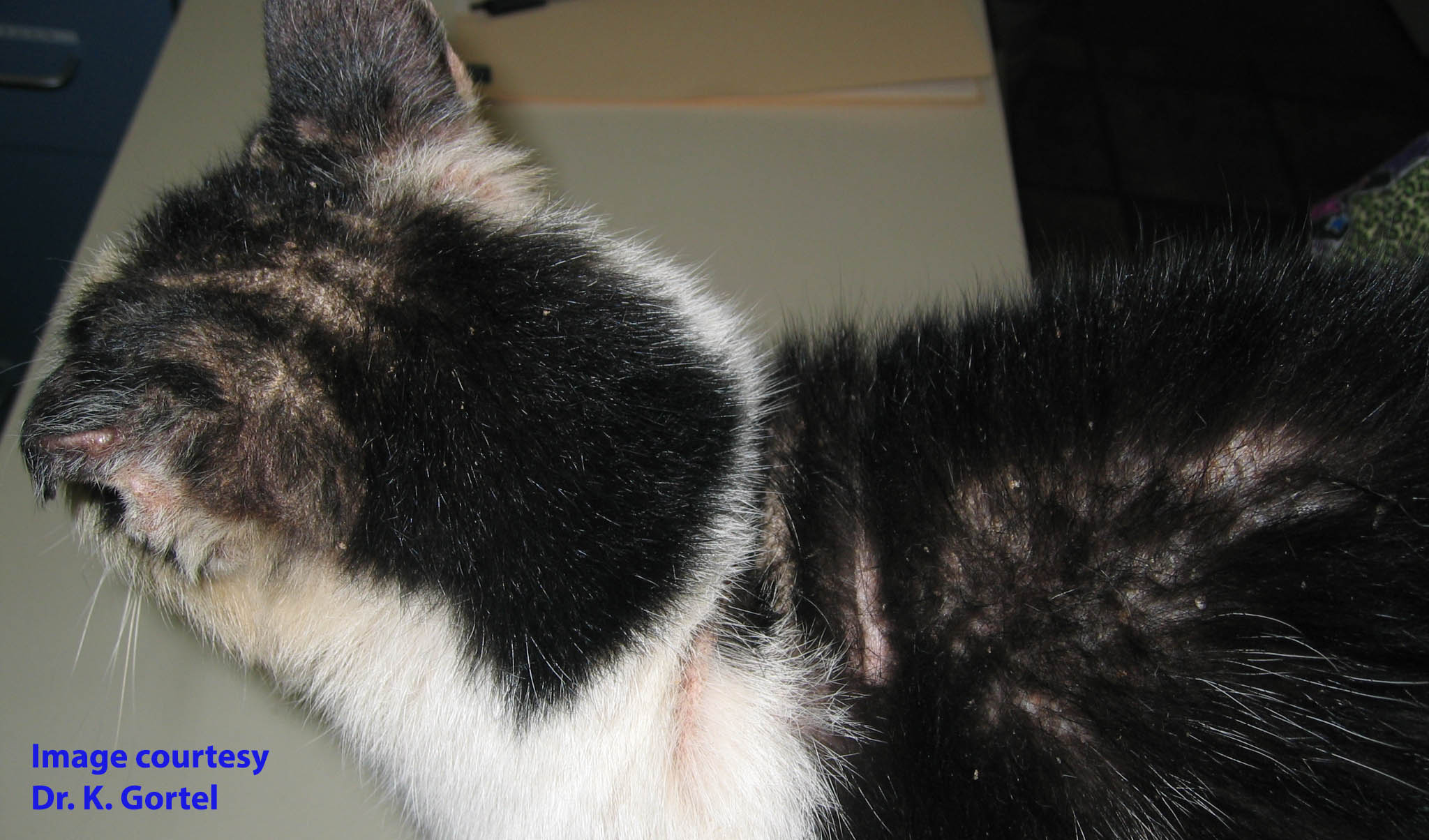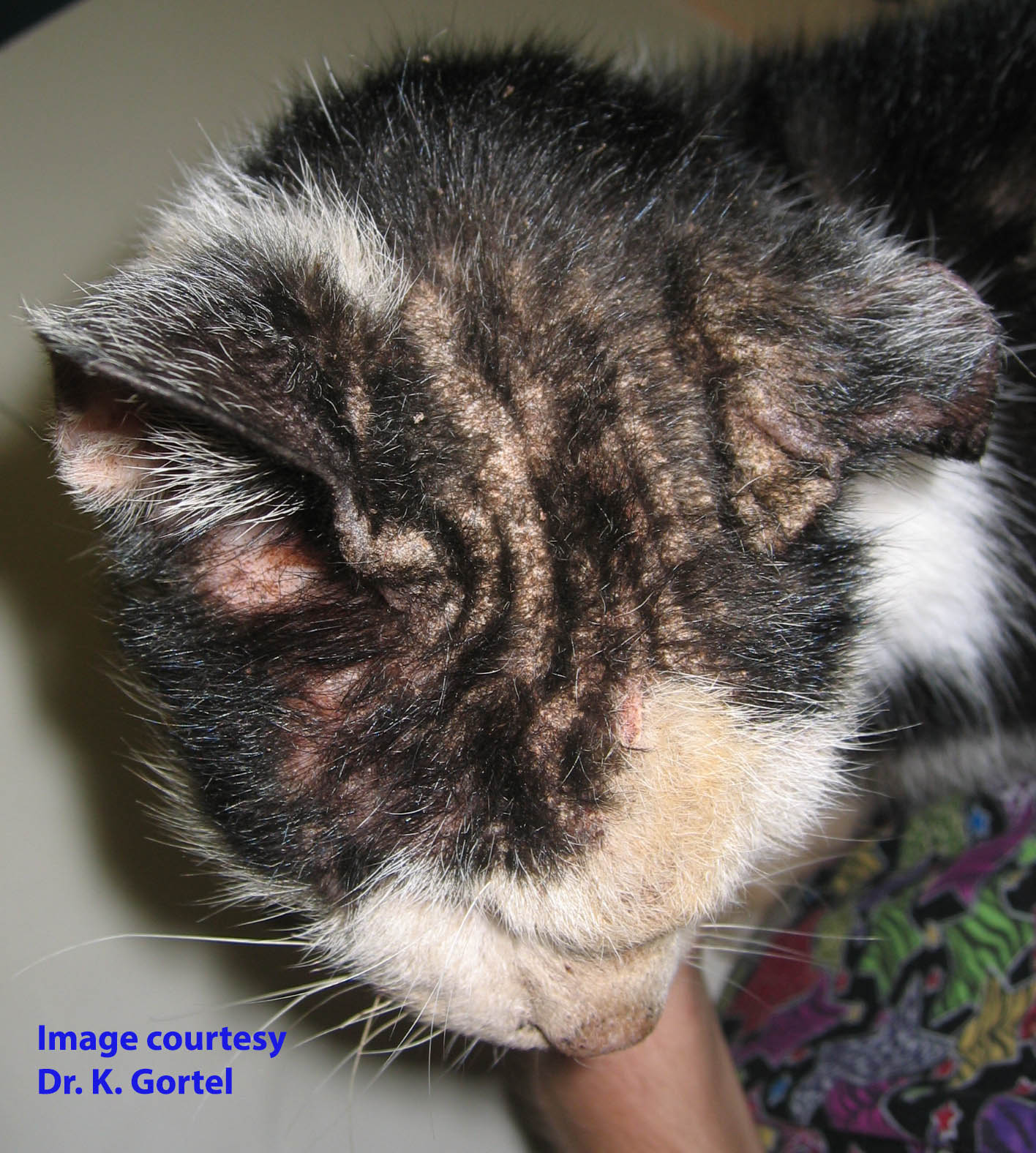Notoedres cati
Mites of the burrowing mite genus Notoedres infest domestic cats and free-ranging felids, and rarely domestic dogs and free-ranging canids, around the world.
Summary
The burrowing mite Notoedres cati infests domestic cats and free-ranging felids, and rarely domestic dogs and free-ranging canids, around the world. It is (exceedingly) rare in North America. Notoedres is similar to Sarcoptes in appearance and clinical presentation. Initial lesions are usually around the ears and face and are characterised by intense pruritus and a dry, crusty appearance. Other areas of the body can also be affected. Notoedric mange is severe, even fatal, and highly contagious among cats. All in-contact felids should be treated with off-label macrocyclic lactones, such as topical selamectin, or isoxazolines. Notoedres cati only transiently infests sympatric rabbits, dogs, and people, but can cause intense pruritis.
Taxonomy
Phylum: Arthropoda
Subphylum: Amandibulata
Class: Arachnida
Subclass: Acari
Order: Astigmata
Family: Sarcoptidae
Notoedres species are in the same Order as Otodectes, Sarcoptes, Psoroptes, and Chorioptes, which is different from that containing Cheyletiella, Demodex and Neotrombicula (Prostigmata), and from that containing Dermanyssus and Ornithonyssus (Mesostigmata). They are burrowing mites in the same Family as Sarcoptes. Like Sarcoptes, species/strains of Notoedres may be host-specific.
Note: Our understanding of the taxonomy of parasites is constantly evolving. The taxonomy described in wcvmlearnaboutparasites is based on Deplazes et al. eds. Parasitology in Veterinary Medicine, Wageningen Academic Publishers, 2016.
Morphology
Adult Notoedres cati infecting cats are similar to Sarcoptes, with a round body, four pairs of short legs, and long, unsegmented pretarsi with small caruncles. They can be differentiated from Sarcoptes by their smaller size and the position of the anus, which is anterior to that of Sarcoptes. The six-legged larvae and eight-legged nymphs are even smaller than the adults.
Host range and geographic distribution
Notoedres cati infects domestic cats, and occasionally free-ranging felids, around the world. It is rare in Europe and North America. The mites have also been recovered from foxes, dogs, rabbits and people. Rodents have their own species. Notoedric mange has been recognized inf rats and grey squirrels in western North America.
Life cycle - direct

The life cycle of Notoedres occurs totally on the host. Adult mites mate in small depressions in the epidermis. Females dig tunnels in the outer epidermal layers where they lay eggs. These hatch to release larvae, which develop first to nymphs and then to adults while moving to the skin surface. The life cycle can be completed in less than three weeks. Mites cannot survive off the host for more than a few days, and the survival time is dependent on temperature and humidity.
Epidemiology
Notoedres mites are transmitted by direct contact among cats, and the infestation is highly contagious. The mites spread very rapidly, and if found in one adult cat in a group, or in one kitten of a litter, it should be assumed that they are present in all cats in the group and in all the kittens. MItes can survive off the host for a few days.
Pathology and clinical signs
Lesions of notoedric mange in cats have a characteristic distribution, first appearing on the medial proximal edge of the ear pinna. The lesions rapidly come to affect the rest of the pinna, the face, eyelids and the neck. They may also spread to the feet and perineum, possibly as a result of face washing with the feet and sleeping in a curled position.
There is intense itching (pruritus), which is probably largely immune-mediated, together with hyperkeratosis and a dry, crusty skin. There is often peripheral lymphadenopathy. The itching causes the cat to seek relief, and this may result in hair loss from rubbing and sometimes severe excoriation. Untreated, the lesions sometimes spread to involve large areas of the body. Notoedric mange is often associated with neglect and can be fatal, especially in young cats.


Diagnosis
History and clinical signs are very helpful, particularly the pruritus. Recovery of mites (and eggs) by deep skin scrapings is the best method to confirm the diagnosis. In most cases there are large numbers of mites and they are, therefore, relatively easy to find.
Histology of skin biopsies is sometimes used to diagnose notoedric mange, but sensitivity and specificity are sub-optimal. Mites can frequently be detected on fecal flotation of cats, due to grooming. Differential diagnoses are Otodectes (easily distinguished by its long legs and body shape as a surface mite) and Sarcoptes (exceedingly rare in cats).
Treatment and control
No products are approved in Canada for the treatment of notoedric mange, but several drugs, including ivermectin (VARIOUS) and selamectin (REVOLUTION), have been used extra-label in North America.
Because Notoedres is highly contagious, it is very important to treat all in-contact cats, including those with no clinical signs. It is not usually necessary to treat in-contact dogs or rabbits, nor is extensive environmental decontamination needed.
Public health significance
Notoedres mites from animals can transiently infest people, resolving spontaneously in a couple of weeks following loss of access to the infested cat. The most obvious clinical sign of Notoedres in people is intense pruritus.

